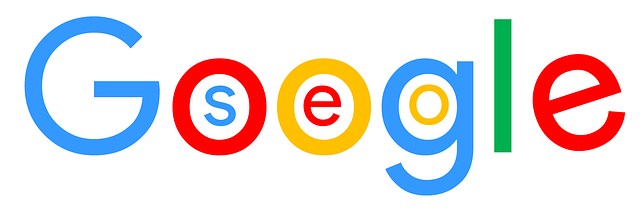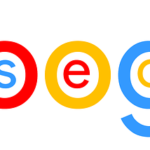What are the top Google ranking factors in 2020 and how do they affect a website’s search position?
As Google holds 92% of the global search engine market share, it’s essential to know how their systems work. What do they consider important? And what can website owners do to help push their site to the number one spot?
This article examines 6 of the most important search engine optimization factors.
We look at the HTML tags that Google deems as vital. We break down on page SEO and off page elements like authoritative backlinks. And we explain how structured data and analytics combine to boost better rankings.
Read on to see what Google finds important in 2020. Then use that knowledge to jump to page one.
How Many Google Ranking Factors Are There?
Quite like a secret sauce, no one truly knows all the factors that go into Google’s ranking algorithm.
However, the search engine giant gives essential advice on the subject. Including how their site crawlers work and the elements they find valuable.
Search engine optimization or SEO builds on these elements to improve a website’s chances of reaching the first page.
Of the hundreds of possible ranking factors, some sit higher on the list. The remainder of this article looks at the top 6 and how they can directly impact search results.
1. Vital SEO HTML Tags
HTML is the language of the web.
HTML tags tell a website browser what to display. For example, the content of a <title> tag will show on the tab at the top of the browser screen.
Google examines the content and attributes of HTML tags to determine what the site is about. And some tags are more important than others.
Heading Tags
The heading or <h1> to <h6> tags give a summary of the content beneath them.
Google sees these headlines as a major factor in whether its users will want to continue reading a page or leave. It’s therefore vital to include and optimize heading tags on every page to provide an accurate picture of their context.
Including longtail keywords in headings can help. Yet be careful of keyword stuffing or adding too many phrases. Google may see it as spam and could decrease rankings as a result!
Meta Content
Meta or hidden information gives Google more information about a website page that a user can’t normally see.
As mentioned above, the <title> tag gives an overall summary of the page content. That and the meta description tag actually appear on Google search results. Users click on the title as it forms the link while the description sits beneath it.
Optimizing meta content can have an impact on visitor numbers, especially the <title> tag. Do this on every page to get the best results.
2. Optimized Content
Google values expertise, trustworthiness, and authoritativeness. Its Webmaster Guidelines say to make pages for users, not search engines.
This must be reflected in the content of each website page.
Optimized content balances keywords, images, media, and other elements in relation to the copy/text. If the page reads like it’s written for a robot then users won’t read it and Google won’t rank it.
The tip is to keep the copy as interesting and natural-sounding as possible while relating to the keyword strategy.
Keyword Optimization Strategy
Google recommends analyzing competitors’ websites through its website auditor tools like Lighthouse.
Lighthouse returns a quality score of a web page including SEO. It also audits performance, accessibility, and more. Other useful tools are found in the Google Search Console and all are free to use.
3. High Authority Backlinks
Off-page SEO involves ways to boost rankings from other websites. And the most important is backlinking.
Backlinks are simply external links. Google sees a backlink as a way to measure the importance of the external site.
The reasoning is simple. If a website encourages its visitors to go elsewhere then the linked site must be good. Why send someone to somewhere that sucks?
Google has used this PageRank to measure website importance from the beginning.
It still lists it as a factor in 2020 so ensure well-ranked sites link back to yours. And backlinks from spam sites won’t work so don’t request them.
4. Google Core Web Vitals
How do you accurately measure quality? Google has asked that question for years and as a result, created the Web Vital initiative.
The Core Web Vitals identifies three metrics that help determine a web page’s quality score:
- LCP
- FID
- CLS
LCP or Largest Contentful Paint measures how long a page takes to load. The shorter the load-time the better the score. Google recommends less than 2.5 seconds.
FID or First Input Delay measures how long a page takes to become interactive. A good FID is less than 100 milliseconds.
CLS or Cumulative Layout Shift determines the stability of a page. In other words, when does it settle and become usable?
These three metrics are becoming a key part of modern SEO. They help shape how a business website should optimize its pages and are easy to analyze.
5. Structured Data Markup
Certain tags help Google understand the content on a web page and display it in the best way.
Structured data standardizes this approach. The format classifies information into a type of simple database. Google then takes that content and creates special search snippets like business reviews and events.
Use the structured data markup helper tool to create the code. Place it within the <head> tag and Google will soon find and implement it into its results.
6. User Behavior and Engagement
Google Search Console and Google Analytics explore where traffic comes from and what the users did during their visit.
Four factors that can impact search results include:
- CTRs or click-through rates
- Bounce rates
- Session duration
- Session depth
These all relate to engagement.
If users arrive on a web page and soon discover it’s not for them they leave. This results in a high bounce rate and low session duration.
If they do like the landing page but find the other pages’ content unsuitable, they’ll go elsewhere. Their session depth and duration suffer and that’s something neither the site owner nor Google wants.
Engaging visitors requires informative content. Something to keep them interested and want to come back for more.
Manage SEO Ranking Factors With Lee Digital
We’ve looked at the top 6 Google ranking factors that help determine where and why a website gets positioned.
Optimizing for these essential elements can have a major impact on a site’s search position. But what’s the best way to implement them? And what about other ranking factors that we haven’t touched on?
Lee Digital is a search engine optimization solutions provider who understands what Google wants.
We offer result-driven SEO services that drive targeted traffic to your website. Our team wants to boost your business by attracting more visitors to increase leads and generate sales.
Why not contact us today to discuss your SEO requirements? We’re based in Oregon and cater to a nationwide client base.
Let Lee Digital manage your search engine strategy and make your website work for you.









